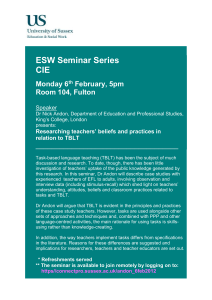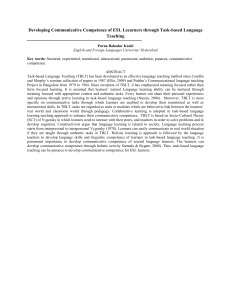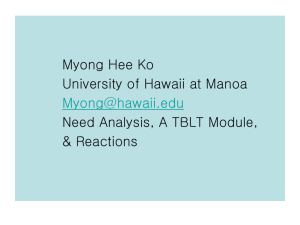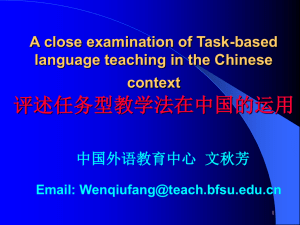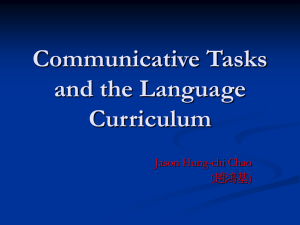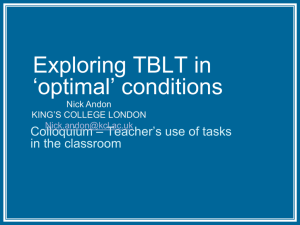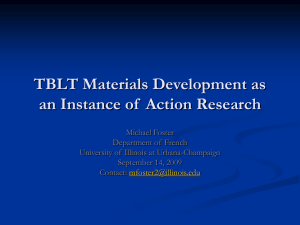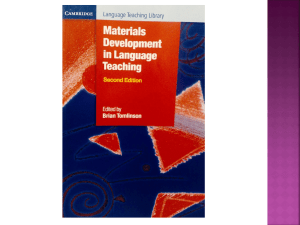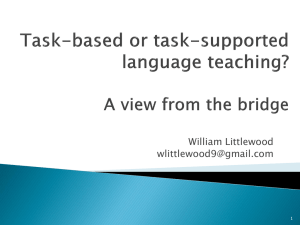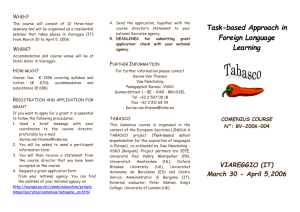Task-Based Language Teaching: TBLT vs. tblt
advertisement
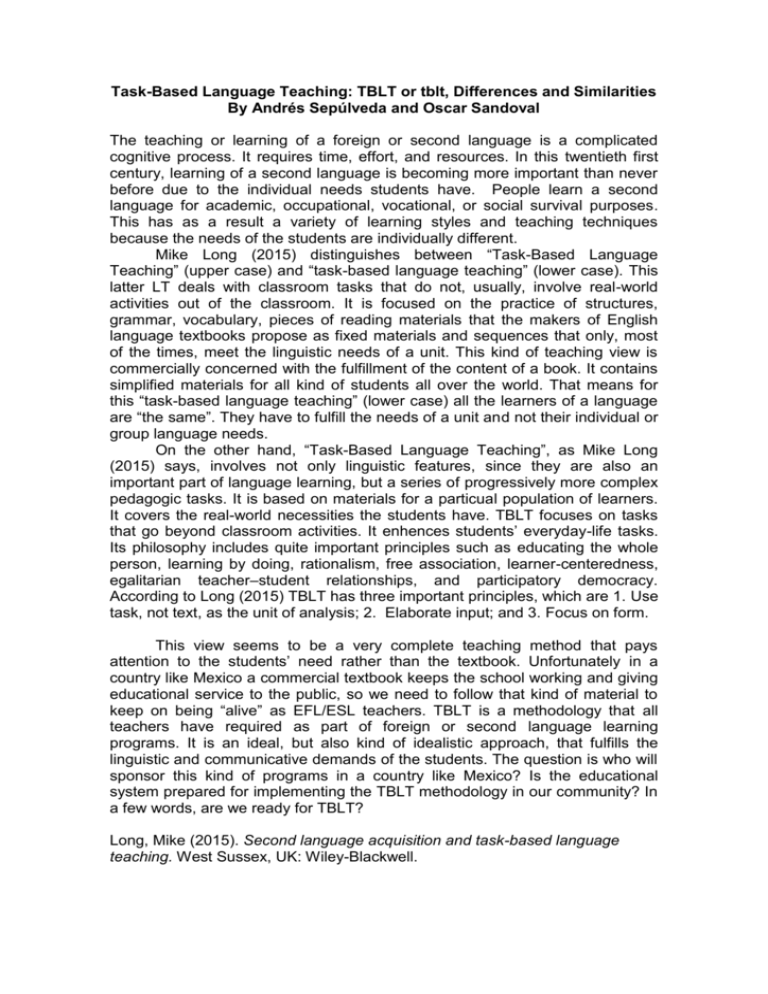
Task-Based Language Teaching: TBLT or tblt, Differences and Similarities By Andrés Sepúlveda and Oscar Sandoval The teaching or learning of a foreign or second language is a complicated cognitive process. It requires time, effort, and resources. In this twentieth first century, learning of a second language is becoming more important than never before due to the individual needs students have. People learn a second language for academic, occupational, vocational, or social survival purposes. This has as a result a variety of learning styles and teaching techniques because the needs of the students are individually different. Mike Long (2015) distinguishes between “Task-Based Language Teaching” (upper case) and “task-based language teaching” (lower case). This latter LT deals with classroom tasks that do not, usually, involve real-world activities out of the classroom. It is focused on the practice of structures, grammar, vocabulary, pieces of reading materials that the makers of English language textbooks propose as fixed materials and sequences that only, most of the times, meet the linguistic needs of a unit. This kind of teaching view is commercially concerned with the fulfillment of the content of a book. It contains simplified materials for all kind of students all over the world. That means for this “task-based language teaching” (lower case) all the learners of a language are “the same”. They have to fulfill the needs of a unit and not their individual or group language needs. On the other hand, “Task-Based Language Teaching”, as Mike Long (2015) says, involves not only linguistic features, since they are also an important part of language learning, but a series of progressively more complex pedagogic tasks. It is based on materials for a particual population of learners. It covers the real-world necessities the students have. TBLT focuses on tasks that go beyond classroom activities. It enhences students’ everyday-life tasks. Its philosophy includes quite important principles such as educating the whole person, learning by doing, rationalism, free association, learner-centeredness, egalitarian teacher–student relationships, and participatory democracy. According to Long (2015) TBLT has three important principles, which are 1. Use task, not text, as the unit of analysis; 2. Elaborate input; and 3. Focus on form. This view seems to be a very complete teaching method that pays attention to the students’ need rather than the textbook. Unfortunately in a country like Mexico a commercial textbook keeps the school working and giving educational service to the public, so we need to follow that kind of material to keep on being “alive” as EFL/ESL teachers. TBLT is a methodology that all teachers have required as part of foreign or second language learning programs. It is an ideal, but also kind of idealistic approach, that fulfills the linguistic and communicative demands of the students. The question is who will sponsor this kind of programs in a country like Mexico? Is the educational system prepared for implementing the TBLT methodology in our community? In a few words, are we ready for TBLT? Long, Mike (2015). Second language acquisition and task-based language teaching. West Sussex, UK: Wiley-Blackwell.
